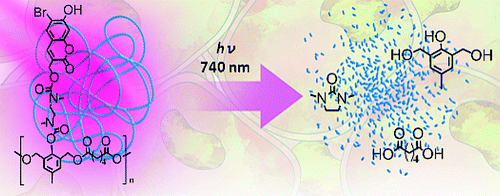New ‘smart’ material could help tap medical potential of tissue-penetrating light
November 17, 2011

A practical "smart" material that may supply the missing link in efforts to medically use a form of light that can penetrate four inches into the human body (credit: University of California, San Diego)
Scientists at the University of California, San Diego Skaggs School Pharmacy and Pharmaceutical Sciences report development and successful initial testing of the first practical “smart” material to use a form of light that can penetrate four inches into the human body, for use in diagnosing diseases and engineering new human tissues in the lab.
They used near-infrared (NIR) light (just beyond what humans can see), which penetrates through the skin and almost four inches into the body. Low-power NIR does not damage body tissues. However, current NIR-responsive smart materials require high-power NIR light, which could damage cells and tissues.
So they developed a new smart polymer (plastic). Hit with low-power NIR, the material breaks apart into small pieces that appear to be nontoxic to surrounding tissue. They could put the polymer in an implantable hydrogel, which is a water-containing flexible material used for tissue engineering and drug delivery. A hydrogel with the new polymer could release medications or imaging agents when hit with NIR. “To the best of our knowledge, this is the first example of a polymeric material capable of disassembly into small molecules in response to harmless levels of irradiation,” say the researchers.
Ref.: Nadezda Fomina, et al., Low Power, Biologically Benign NIR Light Triggers Polymer Disassembly, Macromolecules, 2011; 44 (21): 8590 [DOI: 10.1021/ma201850q]